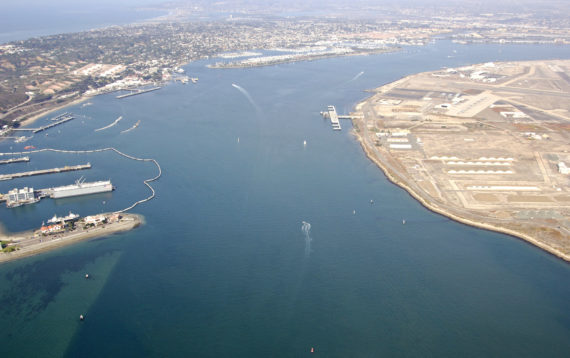Location: San Diego County
Project Type: Science and Monitoring
Status: Current
Cost: $1,271,028
Funding Gap: $0
Area Affected: 10 acres
Assembly District: 78
Senate District: 39
Congressional District: 51
Project Lead/Grantee:
California State Coastal Conservancy, Katie Nichols (katie.nichols@scc.ca.gov)
 For more information, visit scwrp.org
For more information, visit scwrp.org
San Diego Bay was historically a shallow water system composed of significant intertidal habitat. However, decades of dredging and channelization have resulted in a loss of 42 percent of San Diego Bay’s shallow subtidal habitat and 84 percent of its intertidal mudflat habitat since the late 1800’s. These modifications and associated shoreline armoring have resulted in the loss of most of the natural shoreline protection that marshes, oyster beds, and other intertidal and shallow subtidal habitats provided. Native Olympia oysters were a dominant native species in these areas of San Diego Bay until the early 1900’s when their populations declined due to over-harvesting, pollution, and loss of wetlands. Today, viable native oyster stock still exists in San Diego Bay, but a lack of hard substrate habitat prevents oyster populations from re-establishing.
The goal of the San Diego Bay Native Oyster Living Shoreline Project is to create a biologically rich native Olympia oyster (Ostrea lurida) reef as a living shoreline in south San Diego Bay. As a pilot project, it will aim to serve as part of a complete marsh system that is ecologically functional and resilient to changing environmental conditions and protects bay tidelands and the adjacent shoreline. The project will aim to test baycrete elements with the goal of establishing native oyster reefs that protect shorelines from erosion while providing important habitat for wetlands, aquatic plants and ecologically and commercially important wildlife. The project will also aim to provide improved water quality via settling of sediments and pollution filtration and will increase wetland connectivity to intertidal and subtidal lands. Although the project footprint is only 0.2 acres, the project area affected by project improvements will be 10 acres.

